
Can parrots have peanut butter: As peanuts are very rich, it is better to offer them a lot of moderation. More dry roasted digestible than raw. The peanuts offered in the trade are usually roasted, whether she is dissected or in ecals. The parrots love peanut butter.
Diet is one of the most important factors in your parrots. Poorly nourished they will have a very reduced life expectancy due to rickets by a poorly balanced diet therefore deficient or by obesity due to a diet too rich.
Many parrots die very young and the autopsy reveals cirrhosis of the liver attributed to a diet too fatty and a lack of exercise that promotes excessive weight gain, this will be the case for example for a bird that will sort its food and eat only Sunflower or Peanut.
- Legumes are the dried seeds of plants to pods, much appreciated by our parrots, which present themselves in various shapes and colors.
- Legumes are a source of plant protein of premium quality and should be part of the parrot diet on a regular basis (3-4 times a week).
- Low in fat, cholesterol-free (except peanuts), and rich in minerals.
- Legumes are included in the group “Meat and Substitutes” from Canada’s Food Guide.- 1 cup of Legume contains as much protein as 60 to 90 grams. from meat
- It is best to offer them to our bird in Combination with cereals and vegetables, not overcooked, “al dente”, but never dry.
- Mung and azuki beans as well as lentils are the legumes that are best digested.
- All dry legumes can be kept for 1 year. With Time, legumes become harder and less digestible. It would seem that this is less the case for lenses, but It is still preferable not to keep them for more than one year. They are kept in a tight-airtight, cool, dry container.
- Always offer legumes for food human to your parrot, never seeds intended for the culture. In the latter case, the sanitary requirements are less stringent and they may contain repellents or poisons for wild animals.
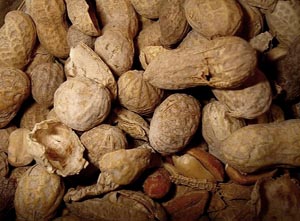
Peanuts
- High in calories and proteins, very popular with our Parrots. As peanuts are very rich, it is better to offer them with great moderation.
- More digestible dry-roasted than raw.
- Commercially available peanuts are usually roasted, whether shelled or shelled.
- Parrots love peanut butter. The latter must be kept cool, as it goes rancid easily.
- Avoid industrial peanut butter. They contain usually salt, chemical preservatives, flavors, and added sugars. In addition, often, to preserve the Stability, hydrogenated oils (trans fats) are added.
Making peanut butter
Choose organic dry-roasted peanuts and switch to the mixer (robot).
It can be beaten into a cream with a little water.
Natural peanut butter (no chemical preservatives))
Once started, keep for a week at room temperature, Two months in the refrigerator. In natural peanut butter, It is not uncommon for oil to rise to the surface, a phenomenon normal that can be corrected by stirring everything with a knife.
Roasted peanuts
Roasted peanuts can be stored in a cool place and dry or in the refrigerator. Shelled, three months; in shell, nine months, and floods in an airtight container, three months in the refrigerator, six months in the freezer.
- Roasting raw peanuts: arrange them in one row on a metal plate and roast them for 15 to 20 minutes in an oven set at 175°C – 350°F
Boiled peanuts
Peanuts boiled in water acquire a Soft texture not allowed by other modes of cooking. Soak first overnight before cooking them overheat very mild for eight to ten hours. Add water as needed. A treat much appreciated by parrots.
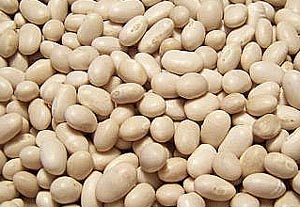
White beans
Beans
- Dried beans are one of the best sources of Soluble fiber and are rich in protein Good quality for our parrots.
- After picking, the skin of the beans hardens and some chemical transformations occur in the grain, which there loses digestibility. The longer they are kept, the longer they must soak for a long time before being cooked.
- Semi-germinated: soak for eight hours. Just then put them, still wet, in a glass jar closed and place them in the dark. As soon as a germ appears, Which takes about 24 hours, they can be cooked as at usual.
- Dry beans can be kept for one year in a container waterproof, cool, and dry. At the end of this time, they lose digestibility.
Azukis
Some beans
Azukis
- Good source of protein. Slightly sweetened with a Taste of nuts, birds love it. Excellent sprouted and can also be blown.
Black-eyed Dolic
- The name “black-eyed dolique” comes from him the fact that its hilum (attachment point to the pod) forms a dark spot, usually black, sometimes brown, red, or dark purple according to the varieties, which gives it the appearance of an eye. This hilum disappears when cooked.
Plural of blanc
- In the world of legumes, white beans are among the richest in calcium.
Mung
- It is mainly used germinated; It is the basic ingredient of the Chop Shuey. The most common variety is green, but there are more than 200 others that can be golden yellow, brown, olive green, purplish brown, plain, or spotted.
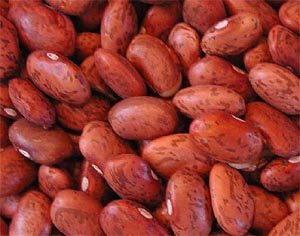
Pinto
Pinto
- Speckled bean, slightly salty and delicious.
- Caution: can create intoxication if poorly prepared. Refer to the “preparation and cooking” section at the bottom of this article.
Red
- The slightly floury and soft texture when cooked.
- Caution: can create intoxication if poorly prepared. Refer to the “preparation and cooking” section at the bottom of this article.
Soy
- Do not consume raw (anti-trypsin). Also considered rich than animal products. Avoid offering soy or its derivatives when the bird is in the hormonal period. Soybeans contain a natural form of estrogen which can increase the level of hormones.
- Soy milk: lactose-free, soy milk is suitable for Parrots. Great source of calcium. Prefer soy milk fortified with vitamins A and D.
- Tofu: drained and prepared, milk gives tofu, a kind of Plant-based cheese that has little flavor, but can absorb that of other foods or condiments. Can be stored in water in the refrigerator, for 1 week.
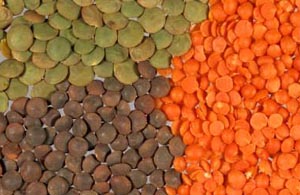
Lenses
- Lentils are a good source of soluble fiber. This help stabilizes blood sugar levels and gives energy over a long period of time.
- The reds are shelled, less nutritious, and do not germinate step. Lentils can lose their shape when cooked, It is, therefore, necessary to avoid cooking too long which transforms the pureed lentils (parrots do not like it too much). Foresee 60 min for the brown lens, and 15 to 20 min for the red lens.
- Lentils do not need to soak Before making them cook, rinse them with plenty of water, eliminating those that Float… as well as pebbles as needed.
- Immersing them in boiling water would make it easier for them to digest.
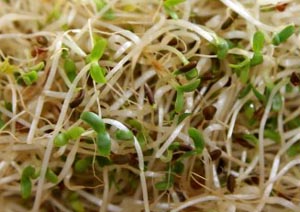
Alfalfa
- Very high nutritional value when germinated. There are young shoots sold in grocery stores.
- The base of the shoots should be white, and the tip green. They must be firm and fresh. Avoid yellow shoots or wilted or partly bathed in liquid.
- They are kept for a few days in the refrigerator in their original container or in a perforated plastic bag.

Peas
Chickpea
- It is the most protein pea and the richest in minerals. Easy to germinate and delicious. Chickpeas of the desi type That of the kabuli type are very well germinated.
Dry peas, split peas, split peas
- An important source of proteins and carbohydrates. Split peas taste more delicate and cook faster. May lose their form when cooked.
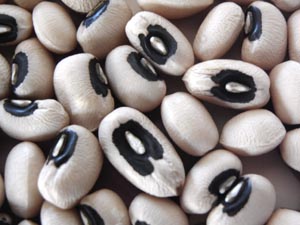
Black-eyed dolic
Preparation and Cooking
If you buy canned legumes, you have to take the time to rinse them well, because much too salty for the Parrots.
Most varieties of legumes except Azukis, Mungs, and lentils need to soak for 6 to 8 hours or overnight, then should boil over the high heat of 15 to 20 minutes to eliminate toxins. This is especially important for the red bean family which can cause poisoning if they are not well Prepared.
- Always carefully sort and wash all legumes.
- Soak in a bowl large enough to let them swell if necessary (see table below). Cover with cold water, Soak overnight, then drain and rinse well.
- Always discard the soaking water of legumes (trisaccharides – gases, toxic products)
- Start cooking legumes in cold water, and cover legumes.
- Bring to a boil and boil over high heat for 10 to 15 Minutes.
- Then lower the heat and simmer over softer heat, until they are tender.
- When cooked, legumes double or triple in volume.
If you forgot the soaking, you can put the legumes In cold water, bring them to a boil for 2 minutes and leave them to rest for 2 hours so that they swell.
Legumes are an excellent source of protein for our parrots and should be offered on a regular, in combination with cereals, in the mixture of fruits and vegetables of our birds.
Soaking and cooking table legumes
| Legumes 1 cup |
Dip | Water | Cooking |
| Azukis | No | 3 cups | 1.5 hours |
| Black-eyed Dolic | 6-8 hours | 3 cups | 1 hour |
| White beans | 6-8 hours | 3 cups | 1.5 hours |
| Black beans | 6-8 hours | 4 cups | 1 hour |
| Red beans | 6-8 hours | 3 cups | 1.5 hours |
| Soybeans | 24 hours | 3 cups | 2.5 hours |
| Lenses | No | 3 cups | 40-45 minutes |
| Red lentils | No | 3 cups | 20 minutes |
| Mung | No | 3 cups | 30 minutes |
| Pinto | 6-8 hours | 3 cups | 1.5 hours |
| Split peas | No | 3 cups | 5 minutes |
| Chickpeas | 6-8 hours | 4 cups | 2 hours |
| Yellow peas | 8 hours + | 3-4 cups | 3 hours |
All parrots are granivorous and frugivorous except lorises and lorikeets
which feed on nectar and pollen from flowers.
The diet of parrots in their biotope is different depending on their geographical location. It is really very difficult to know at present for this or that species what their diet is based on.
The various observations show that parrots do not necessarily have a balanced diet in their natural environment. They spend most of their time searching for food and often travel dozens of miles to find a nutritional site. When a group of macaws, for example, arrives on a palm tree whose fruits are ripe, each individual remains on this site and feeds on palm nuts until the fruits are exhausted.
To fully understand the nutrition of parrots, it is first necessary to study their area of life and essential functions. Exotic birds live in forests and mainly above ground. Their survival depends on their ability to fly. To fly the birds must be light and have sufficient energy to take off and ensure flight over a great distance. The lightness of the bird is given by its low body weight and large air sacs. A bird has only 3% fat.
The bird’s lung behaves like a balloon inflated with warm air. The exchanges are totally different from mammals. The main source of energy is glucose in the form of starch, nectar, fructose, etc. The transformation of glucose into lactic acid is mainly done by lactic ferments located in the crop.
The fiber in the diet of flying birds is very low because their digestive tract is short and thin. The accumulated fibers would be an additional weight. Moreover, at take-off, the birds systematically relieve their intestines.
As for calcium, birds that live above ground do not have access to the mineral calcium and therefore cannot assimilate it easily. They find it in ionized calcium forms in plants.
Vitamin A is very important, the organism of birds converts carotenes from plants into vitamin A. Iron is an essential trace food but a surplus of 80-100ppm is toxic to birds.
Cage and aviary birds do not have the same needs as their wild congeners because they do not have the same way of life. In captivity, we can equilibrate their diet and thereby increase their longevity.
A granivorous parrot in captivity needs 10 to 15% protein, 3 to 10% fat, 3 to 4% fiber, and 55 to 68% glucose depending on the species and their activity.
A nectarivorous parrot in captivity needs 3% protein, 3 to 5% fat, 3% fiber, and 85% glucose depending on the species and their activity.
Understanding the digestion of parrots
The digestion of birds takes place in 3 phases: – The crop:
It ensures fermentation by probiotics. Hydration of sugars and pre-digestion.
– Proventricle: Ensures the digestion of proteins. Gastric juices break down proteins into amino acids.
– The gizzard: Its role is to knead and extract the digestive juice from the fibers. We always notice in the gizzard the presence of dry fibers. The role of fiber is essential because it cleanses the intestines. The fibers also ensure a slowing down of intestinal transit which makes it possible to obtain better absorption.
How do I get my bird to eat everything I give it?
Very good question. For this, there are several methods that accustom the bird to appreciate all the food essential to its good balance.
1st method:
I give 2 times a day to eat to my bird. In the morning I give him what he doesn’t like, late at night I give him what he likes, so he has all day to get acquainted with the foods he doesn’t like or doesn’t know. This method can be very fast, a few days or longer, a few weeks, or even a few months. It is the master who decides what is good for his bird and he must stick to it even if his pet exhibits unusual behaviors, bristling feathers, whining, or shrill cries for no apparent reason. They are very good at showing us what they don’t like and have excellent acting skills.
2nd method:
The 2nd method consists of fasting the bird for a day and then giving it the food it does not like. If the bird is hungry enough it will go to its feeder. The next day, return him to his normal diet. You can do this about twice a week without it affecting his health.
3rd method:
This method is the least stressful for the animal, it consists of gradually mixing what he likes with what he does not like, and make a kind of pâté so that he can get used to all kinds of food.
The different foods for parrots
Parrots and parakeets are granivorous and frugivorous. All parrots can be fed in the same way by a mixture of seeds, different fruits, and vegetables, and balanced granules. Your birds must be given a wide variety of foods to avoid deficiencies. A diet based on seeds or granules should be supplemented with fruits and nuts.
It is also not recommended to give parrot treats to humans, salt, alcohol, and chocolate are to be banned.
Seeds and nuts:
There is a multitude of varieties of seeds. They all have different compositions. A good mixture should be balanced knowing that a parrot in captivity needs 10-15% protein and 3-10% fat. The mixture should be composed according to the percentages of proteins (proteins) and lipids (fats). Some seeds, such as sunflowers and peanuts, which are very popular with parrots, are very fatty and an excess of these can be highly detrimental to your parrots.
Table of % of protein (P) and lipids (L) by type of seed:
SEEDS……… PROTEIN………. LIPIDS
Buckwheat………….. 12 %……………. 3 %
Maize……………….. 10 %…………. 4,5 %
Wheat…………………. 13 %……………. 2 %
Chènevis………….. 22 %………… 32%
Peanut………….. 30 %…………. 50 %
Alcanary Grass…………….. 16 %…………… 4% Table of the composition of mixtures in %
For three types of parrots
Seeds / Birds… Little Parakeets… Great Parakeets… Parrots
Yellow Millet ………………… 25 % ………………… 15 % ……………-
White millet ………………… 25 % …………………. 15 % ……………-
Canary seed ………………………. 35 % ………………… 30 %…………….. –
Oatmeal …………….. 5 % …………………….- –
Flax …………………………….. 5% …………………….- ………………..-
Niger …………………………. 5 % …………………….- ………………..- Sunflower ………….-
……………………. 20 % …………… 20%
Cardy …………………………- …………………….. 10 % …………… 15 %
buckwheat ………………………- …………………….. 10 % …………… 15 %
Paddy rice …………………….- ………………………- ………………… 10 %
Pigeon mix………………-………………………..-…………………. 40%
with cereals
On the market, some mixtures can be purchased ready-made. Some brands are very well-balanced and even enriched with vitamins. Beware of seeds that are not intended for feeding birds, they could be toxic by pesticides or by certain treatments. Do not hesitate to ask your supplier about the origin and brand of these products. Choose brushed seeds from the harvest of the year, and avoid mixtures that have remained in their packaging for a long time.
Some dry seeds are difficult to assimilate parrots, which is why it is better to break down your mixture into 2 parts:
– A dry part composed of seeds and nuts easily shelled (sunflower, cardy, squash, cedar nuts, Brazilian, French, cashew, pistachio, raisins, pine nuts, hazelnuts, almonds, peanuts)
Sprouted seeds:
Sprouted seeds are very rich in vitamins they can be almost compared to greenery. Vitamins such as E or A and C are multiplied several times when the seeds germinate. They are therefore a very useful dietary supplement. Some seeds such as corn or peas are very hard seeds. They become much more tender and therefore easier to digest. Due to their vitamin content and their digestibility, these sprouted seeds can be given during the breeding period or weaning the young. Very rich in vitamin E they can be distributed before the breeding period (see our article on vitamins).
The disadvantage of sprouted seeds is the formation of certain molds that can be toxic. It is therefore necessary to take some precautions when preparing. The easiest method is to choose a large container and immerse your mixture of already washed seeds in it. Cover this volume several times in cold water and let swell for 24 hours. Once these 24 hours have passed, rinse these seeds thoroughly and then put them back in the container for 12 to 24 hours.
Fruits and vegetables
Fruits and vegetables are essential for the good health of your birds. They provide many vitamins. They are complementary to the seeds and should be given every day. Breeders who own a lot of birds usually buy their vegetables and fruits once a week and store them in refrigerators or cold rooms.
The best solution is to give seasonal fruits (peach, apple, pear, mango, banana, kiwi, apricots, oranges, mandarins, etc …). The fruit should be cut into small pieces to avoid waste.
Warning: avocados are toxic to parrots.
Table of the composition of some fruits and vegetables Fruits and vegetables
…… Protein….. Lipids….. Lives A….. Calcium
Apricot………………….. 1,5………….0,4……….277……..15
Banana…………………. 1,2………….0,6………….9……….7
Beetroot………………. 0.9………….0…………….1……….9
Broccoli………………….. 1,3………….0,2…………68……..21
Carrot…………………. 0.7………….0.1………2025…….19
Celery…………………… 0.3………….1……………..5…….14
Cherry………………….. 0,8……………….0,7…………15……..10
Quince…………………… 0,4…………..0,1…………..4……..10
Zucchini……………… 0.8………….0,1…………..22…….10
Date……………………. 1,6………….0,4…………….4…….27
Spinach………………… 0.8………….0,1………….188…….28
Fig…………………… 0,4………….0,2……………..7…….18 Dried
fig…………. 5,7………….2,2…………………25……269
Strawberry………………….. 0.9………….0,6…………….4……..21
Raspberry…………….. 1,1………….0,7…………….16……. 27
Passion fruit…… 0,4…………0,1…………….13………2
Gooseberry.1,3………..0,9….44………….38
Black gooseberry………… 0.8…………0.2………………….13……..31
Red gooseberry………. 0.8………….0,1…………….7………18
Kiwi…………………….. 0.8………….0,3…………………13……..20
Lychee………………… 0.8…………..0,4……………..0………5
Maize…………………………. 2.7………….1,1…………….18……..2
Mandarin……………. 0.5…………..0,2…………….77……..12
Mango………………. 1,1……………0,6………….806……..21
Mure………………….. 0.5………….0.3…………….12……..23
Nectarine……………. 1.3………….0.6…….100………6
Orange………………. 1,4……………0,1…………….26……..56
Yellow grapefruit.0,8………….0,1………….1……..14 Pink
grapefruit… 0.7………….0,1………………32…….13
Papaya ……………….. 1.9…………..0,4…………….612…….72
Fishing…………………. 0.6…………..0,1………………47……..5
Pear………………….. 0,7……………….0,7………………0,3……19
Pepper………………… 0.4…………..0,2………………26……..3
Apple with skin…. 0,3…………..0,5……………….7……..10
Apple without skin….. 0,2………….0,4……………………6…………5
Wild apple……. 0.4………….0,3……………….4……..20
Soybeans………………….. 28,6………….15,4……………..2…….175 Red
tomato……….. 1,1…………..0,3…………………139………8 Green
tomato………… 1.5………….0,3…………79………16
Does Parrot Eat Peanut Butter?
SOURCE: Parrot Coop



















